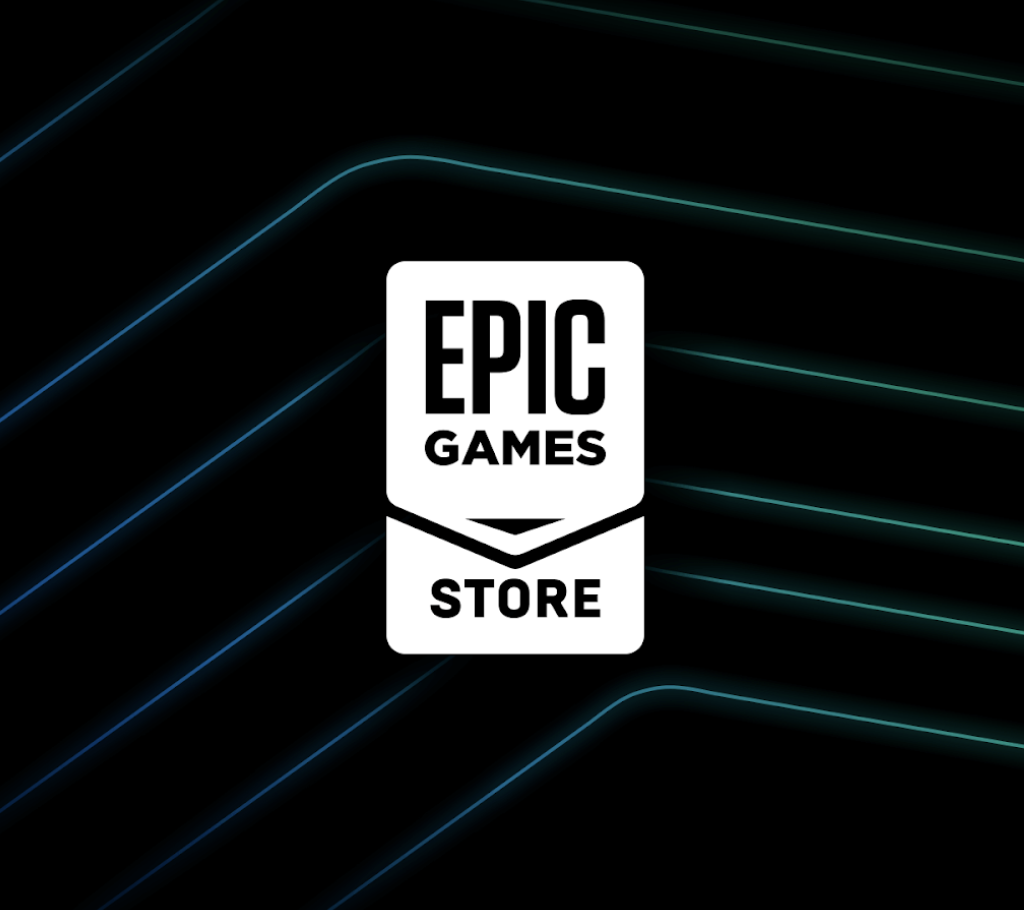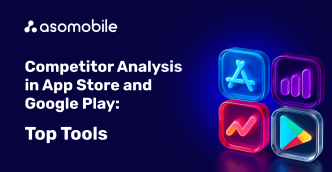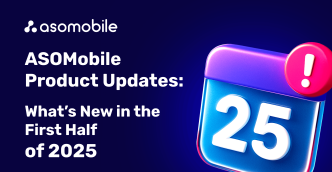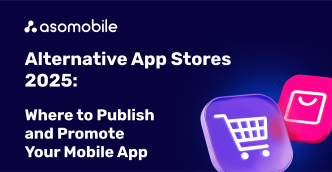Alternative Mobile App Stores for iOS and Android
Did you know that App Store and Google Play are not the only places you can download an app, but there are numerous alternative app stores you should take a look at?
Let’s start with some excellent news for you, devs. From March 2025 onwards, thanks to the DMA (Digital Markets Act), Apple will allow app loading from third-party app stores in the EU, breaking up the monopoly on the app market. Same trends can be seen with Android OS – although there was always the possibility to download files from the third-party websites and apps, Google Play ripped off most of the benefits; which is currently changing – with Galaxy Store expanding for Samsung users, and Huawei AppGallery accommodating users outside of China (broadening their app collection to include bank apps and communication services from other countries). Also, Google recently weakened its policies on sideloading in Brazil and India – a great thing, if you consider exploring some rapidly growing markets with a vast client base (59% and 94% shares of the OS market boasted by Android, respectively, with more than 400 million users in India).
Why should you consider the alternatives?
The App Store and Google Play have now been operating for more than a decade, with stable incomes and the certainty that your app will rise to the top of the charts with a sufficient marketing budget. Why would anyone risk placing their apps on alternative platforms? Take a look at your possibilities while going this way:
- What ties lots of hands when it comes to big ambitions? Exactly, resources. However, with smaller platforms, you have a chance to achieve your desired goals, ultimately launching an app on a comparatively low budget (and avoiding the need to raise the app's price or cut corners on its quality). What is it, if not a dream?
- Something else to sweeten the ear? Competition! All those alt stores are now competing with each other like never before – and that's where you step in. To stand out, they offer ways to promote your app, and feature plays a big part in it. That is another chance to stand out, not because of a multi-million-dollar ad budget, but because you put reasonable effort into app development.
- Low commissions. With alternative platforms, you are not going to pay the usual 30% of your profit for the tech giant that's hosting your app; moreover, you can find another marketplace to host your app for free (with most commission fees varying from 0% to 25%).
- Even more, you can take your chances to get direct payouts for downloads and other rewards and promotions from the altstores
- The EU market, following a recent reshuffle, is now the most significant iOS app market – and that is precisely the moment to take your share in it!
- Building an app for a local market? That means you’re in growing markets in China, India, Brazil, and CIS countries, which await with specific features and yet unexplored possibilities.
Trends of 2024-2025: what changed?
First and foremost, Apple has weakened its grip on the European app market. As of March 14, 2025, alternative apps can officially compete with the App Store, following the European Commission's decision under the Digital Markets Act (DMA). That could help you with app distribution and user acquisition in ways that were previously impossible or highly risky.
Other news includes the expansion of Huawei AppGallery and Samsung-owned Galaxy Store, which are developing their apps as subscription marketplaces. As mentioned earlier, Google has re-entered Brazil and India, with more and easier sideloading now possible, creating new opportunities for growing local markets. Huawei also made a significant step with its new HarmonyOS, which is entirely independent of Android, opening a new niche for apps on its devices, and, of course, for the Chinese app market.
There is some unfortunate news, as Amazon App Store discontinues support of new apps on all Android devices from August 2025 (and it already stopped allowing submission of apps for devices of this OS from February 2025) – and the platform will keep on functioning only on the Fire TV and Fire tablets.
Some other things happened on another front: Xiaomi has switched its original app store (Xiaomi GetApps) to Indus Appstore, a platform made by a local Indian company. How does that affect you? A new platform offers a more localized experience and tries to resolve multiple complaints from the Indian customer base (especially their concern with privacy policy and intrusive ads). Consider other stores as a testing ground as well – a lot of devs now do A/B tests outside of the ‘big two’ – to explore new markets, but also to see how different client bases react to their projects.
Cross-platform stores
Epic Games Store

It has been available on Android devices for some time now and has become the first significant alternative to the App Store in the EU following the implementation of the DMA law. That is your chance to dodge big commissions of the Big Two and still have a big brand behind your back.
Key features:
- Commission: 12$ and CTF coverage; in a Free Games Program, it covers all Core Technology Fee (~0.50 euro for a download) before achieving the 1 million download threshold
- Huge audience: more than 29 million customers globally, focus on the mobile version for iOS in the EU; also with a plan to launch in the UK and Japan in 2025
- Official alternative – bypassing the commissions of the big two legally, no jailbreak or sideload required
- Self-publishing and marketing – the array of tools for devs and the integration into the already developed Epic ecosystem await you.
- Reputation: Epic Games is a strong brand and a trustworthy name, which can gain more trust from users in your apps.
Aptoide (Android and iOS)
Decentralized app store with an open-source platform that works both on Android and iOS (only for the EU). It is an ideal platform for indie game developers and those who value flexibility and freedom from strict regulations, which are often unattainable when working with the Big Two.
Key features:
- Open source and repositories – users and devs can create their channels with a customizable list of apps
- CPI-Monetization: You get paid with every download. Сommissions from IPA cost around 10-20%
- The iOS release was recently launched, following a transition from an invite-only beta version.
Itch.io (Mobile)
A famous online community of indie games with a ‘pay-what-you-want’ approach. For Android, APK files are used; for PC and iOS, web versions or PWA (Progressive Web Apps) are employed.
Key features:
- Flexible monetization model: no standard commission – all money comes from PWYW and Bundles
- Focus on community: the platform is oriented toward indie games and creative projects with high audience involvement
- Bundle Promotion: collections and promos inside the platform foster the popularity of new projects
- DIY publication: You, as a developer, have complete control over the price and visibility of your project
- Minimal obstacles to start: absence of formal requirements for the IPA and certification
Opera Mobile Store (Bemobi)
A cross-platform store by Opera, with support for iOS, Android, and feature phones, with extensive coverage in the developing markets (primarily Latin America and Asia). This alternative is built into the Opera browser and continues to support low-end devices and older OS versions, particularly in developing countries.
Key features:
- Global outreach: 230+ countries, around 2 million downloads on their platform daily
- CPI and carrier-partnerships: standard commission of 30%, but there are benefits through CPI campaigns with network services
- Localised app catalogs for every region aligned with demands
- Best for developing markets: optimal to cover areas with different types of devices and different payment models
Alternatives to Google Play
Samsung Galaxy Store
Official store for Samsung device users (including smartphones, tablets, and wearables). Worth considering, given that Samsung holds 20% of the global market share and nearly 23% of all Android devices worldwide.
Key features:
- Integration in a developed ecosystem: pre-installed on all Galaxy devices, works with Wearables, Themes, Samsung Wallet, supports loyalty cards and coupons
- New payment model for devs: after May 2025, the commission dropped to 20% (and to 15% for the subscriptions)
- Promotion tools: editorial selections via Discover Tab, pre-sales of the Pre-registration, sales & discounts, and a Galaxy Store Badge
- Security and Trust: strict control of apps, reliable Samsung Checkout
- Data Analytics: API(Application Programming Interface) and analytics via Galaxy Store Developer, support of referral marks, and installation analytics
Huawei AppGallery
The official store for Huawei devices on Android and HarmonyOS, available in over 170 countries. The largest phone manufacturer in China, it also holds significant shares in the Asian, European, and Latin American phone markets.
Key features:
- Vast coverage: more than 580 monthly active users worldwide
- Competitive commissions: standard is 15%, participating in marketing can yield up to 85% of profits for devs; active advertisement program, Petal Ads
- High level of checkout: four layers of scanning and moderation, real-name developer verification; all up to the high standards of GDPR(General Data Protection Regulation)/DMA
- HMS integration: access to HMS SDK(Huawei Mobile Services Software Development Kit), push notifications, analytics, and Huawei-specific APIs
- Cultural and regional adaptation: active promotion in Europe and Latin America, high ARPU(Average Revenue Per User) in Asia
Xiaomi GetApps (Mi App Store)
Xiaomi's official Android store, built into MIUI, is especially relevant in India and Southeast Asia. Best for launching in growing local markets and China.
Key features:
- Massive reach: more than 260 million MAUs and ~30 million installs per day, present in 100+ markets
- Easy publishing: simple registration for developers; automatic application updates for users
- Promotion tools: internal advertising and banners in MIUI, clearly visible special offers and recommendations
- Focus markets: active promotion in India (Indus Appstore substitute from January 2025); strong positions in the CIS and SEA.
- Expanded Xiaomi ecosystem: coverage of IoT (internet of things) devices, integration with Xiaomi AIoT (AI of things) platform
Uptodown
An independent Android store (and desktop portal) from Spain, with a focus on access and freedom for users. A huge client base and global presence present an opportunity for you to make a significant impact, even if you don't have large funds or want to test the market for your new project.
Key features:
- Immense traffic: ~130 million MAU, 450 million downloads per month; available without registration and geo-blocking
- Entirely free for developers: 0% commission, files are scanned by 70+ antivirus software
- Localization and search: support for 17 languages, editorial reviews, recommendations
- Catalog of formats: Direct APK download, no contract, with access to legacy devices
- Monetization tools: traffic can be monetized through external services, CPL (cost per lead) models
App Store Alternatives (iOS)
AltStore PAL (EU)
AltStore PAL is the first open-source alternative store for iOS, launched for EU users as part of the Digital Markets Act from April 2024. Allows you to install applications outside the App Store, including emulators and utilities.
Key features:
- €1.50/year – annual subscription offsets the Core Technology Fee
- Installation of “dangerous” apps – for example, emulators (Delta, Clip), which Apple refuses to publish
- Open-source, independent – enjoys the support of the technical community and has high transparency and trust.
- EU-only and easy installation – works on iOS17.4+ with an active EU‑AppleID; requires consent via Apple warnings.
- Links to Piracy – Apple is concerned about access to questionable content, but PAL operates legally under the DMA
Setapp Mobile
Subscription store from MacPaw, launched in the EU in September 2024 after beta testing and meeting DMA criteria: an alternative to the App Store without ads and IAP.
Key features:
- Single subscription €9.49/month – access to more than 50 applications, without advertising, in-app purchases, and hidden fees
- Curated content – only high-quality tools are selected: utilities, productivity, protection, without content from big social services or games
- Requirements – iOS17.4+, EU-Apple ID, access to any devices in the EU; there is a 7-day free trial
- Platform growth potential – expansion of the app collection in 2025, proprietary UX (User Experience), and lack of sideload complications
- Mac → iOS – The Setapp experience is already popular among Mac users, which helps with sophisticated audiences.
BuildStore (via Builds.io)
BuildStore is a familiar store for sideload solutions on iOS, operating without a jailbreak and VPN since 2014, offering certificate and application updates by subscription.
Key features:
- Premium subscription – about $20/month, access to 800+ applications: emulators, tweaks, private social networks, modifications
- Convenient - no computer installation, no VPN, no jailbreak - a completely in-store experience
- Reliability for users – timely replacement of certificates, round-the-clock support, stable operation
- Ideal for utilities and tweaks - distributing applications rejected by the App Store for functional or legal reasons.
Mobivention App Marketplace
Mobivention is an enterprise iOS store launched on March 7, 2024, in the EU in response to the DMA. Designed for secure distribution within companies - B2B/enterprise solutions, perfect for corporate apps within the EU.
Key features:
- For companies and developers, it can be used as an internal distribution channel for employees and clients
- Apple Compatible: Officially licensed and integrated as a legal third party under the EU DMA Policy
- Quality assurance: Each release is reviewed and meets Apple's safety criteria
- White label: you can adapt the interface to the brand/branding, white-label options
- Flexible payment models: support for free corporate apps and alternative business models
How to launch your app in an altstore – brief instructions
- Prepare yourself to build
- Android: generate a signed APK/AAB file
- iOS: export the signed IPA
- Register in a dev cabinet
- Create an account
- Go through the basic verification process
- Fill in the metadata
- The name of the app, its brief and full description
- Add a couple of screenshots, the app icon, and a privacy policy
- Upload your build and send it to moderation
- Upload your APK/ABB ot IPA file
- Wait for the moderation result (usually from a couple of hours to a week)
- Set your analytics
- Add UTM marks to your download links
- Integrate a basic analytics tool to track downloads and monitor the app’s first users.
- Promote and observe
- Set a little ad campaign or ask for a feature from the store editors
- Check your conversion rate and reviews, and update your app when there’s a need for that
| Steps | What to do |
| 1. Prepare your build | Signed APK/AAB or IPA, web-version/PWA |
| 2. Register | Create a dev-account, verify it |
| 3. Metadata | Name, description, app icon, and privacy policy |
| 4. Uploading and moderation | Upload, wait for moderation approval |
| 5. Analytics | UTM‑tags + Firebase/AppMetrica |
| 6. Promotion and updates | Test ads, check the feedback, and update when necessary |
ASO-metrics that you will be looking at
- Impressions → Installs (conversion rate)
- First signs of your direct efficiency(your icon, name of your app, screenshots)
- Try different listings through A/B testing to find out what is most effective.
- Retention Rate (Day 1 and Day 7)
- Day 1 Rate indicates whether your app delivers on its promises during the first launch, onboarding, and value proposition.
- Day 7 marks the first 'favorites' – will they return?
- Compare retention rates between different stores to understand where the audience is most loyal.
- CPI and CPI-targets
- Cost per install: Find out how much you are paying per install in different stores
- Allows for comparison of CPI with Lifetime Value
- Set your CPI goals and try to achieve them
- Launch test ad campaigns for small budget to see if you are close
- Sentiment Analysis Review
- Analyze the tonality of the reviews you're receiving and the keywords used in them.
- Allows you to fix bags and find out what your audience desires
- Incredible input for your product team and any ASO specialist
- How to: use the simple text analysis, and focus on the 3-5 most common words that your customers use (both positive and negative)
- Top Chart Position
- The higher you climb in those ratings, the more organic installs you will get.
- Different stores have different categories of ratings (Top Free, Top Grossing, Top New Apps, etc.)
- It should matter most 24-48 hours after an upload and after an update.
Potential Risks and Legal Considerations
Before diving into the world of alternative app platforms, beware of:
- Fraud and artificially inflated installs
- High risk of artificial installs due to click farms/bot-inflation(up to 30% of fake traffic)
- Counter it by focusing on the real action inside the app (for example, look at in-app purchases or registrations, not just on installs)
- Risks for your reputation
- In unapproved stores, fake apps or malware versions of them are a common occurrence. Verify the store's reliability before taking any action.
- You can lose the trust of your users: it’s essential to keep an eye on the reviews on Reddit, Telegram, and other forums.
- Unpredictable payments
- Small off-store platforms can stop paying you or cease to exist, leaving devs without revenue.
- Do not put all the eggs in one bucket – decentralise to avoid risks.
- Legislative compliance
- In the EU, there are strict standards of transparency, protection of data, and equal conditions for competition (look at the DMA law)
- Ensure that the store you are using complies with the GDPR (General Data Protection Regulation), specifically regarding the obtaining of consent and the processing of personal data.
A piece of advice:
Considering all factors, you should proceed with caution. There are several steps you can take to maximize benefits and minimize unnecessary setbacks and obstacles.
First things first, you need to know what your users think about your product. To do this, regularly monitor mentions of your brand (on Reddit and Telegram) – that will come in handy in case of app malfunctions, interface lags, etc. The same story applies to user complaints on the altstore hosting your app – mostly, people tell you when something is wrong.
Secondly, you should keep yourself (and/or your team) updated on the security moderation of the altstore you are using. It might just save you from a lot of headaches, considering that new security standards may be a reason to take your app down – for a while, or even permanently.
And last but not least, decentralize. There’s a multitude of platforms you can launch your product on, and doing it simultaneously has the potential of saving you from losing it all because of some store’s bankruptcy or some technical problem.
How to choose an altstore?
| Your Goal | Recommended Stores |
| Maximum Android coverage | Huawei AppGallery, Galaxy Store, Aptoide |
| Global SEO promotion | Uptodown, Bemobi |
| iOS alternative in the EU | Setapp Mobile, AltStore, Aptoide |
| Games promotion | Epic Store, Galaxy Store |
| Expansion beyond Google | Aptoide, Uptodown, Bemobi, Epic Store |
All things considered, is it worth it?
Absolutely yes, if you:
- Promote or develop an indie game
- Orient toward developing markets
- Want to test off-store traffic
Not really, if you:
- Have a brand with a strong reputation and requirements for top safety
- Focus only on the developed markets (the EU/the US)
- Fear the fraud, or cannot risk unpredictable revenues
Eager to find out more details, or already launched an app and want to know your metrics and what to do with them? ASOMobile can help you with that in any store, regardless of the app you’re promoting.
In conclusion
In 2025, the mobile app market will no longer be a duopoly dominated by the App Store and Google Play. New laws, such as the DMA in the EU, have weakened Apple's monopoly and opened up the way for alternative stores. At the same time, Android platforms have become as flexible as ever, especially in India, Brazil, and China.
Altstores are
- A way to diminish your commissions to 0-15%
- A chance to stand out without a multi-million-dollar marketing budget
- An opportunity to test your product in new markets
- A platform for non-usual formats and monetization models
However, don’t forget about the associated risks: fraud, unstable revenues, reputational and legislative issues. Therefore, it is essential not to rely solely on one platform and to use analytical tools to monitor installation, user retention, and effectiveness.
 Українська
Українська  Русский
Русский  Español
Español 






